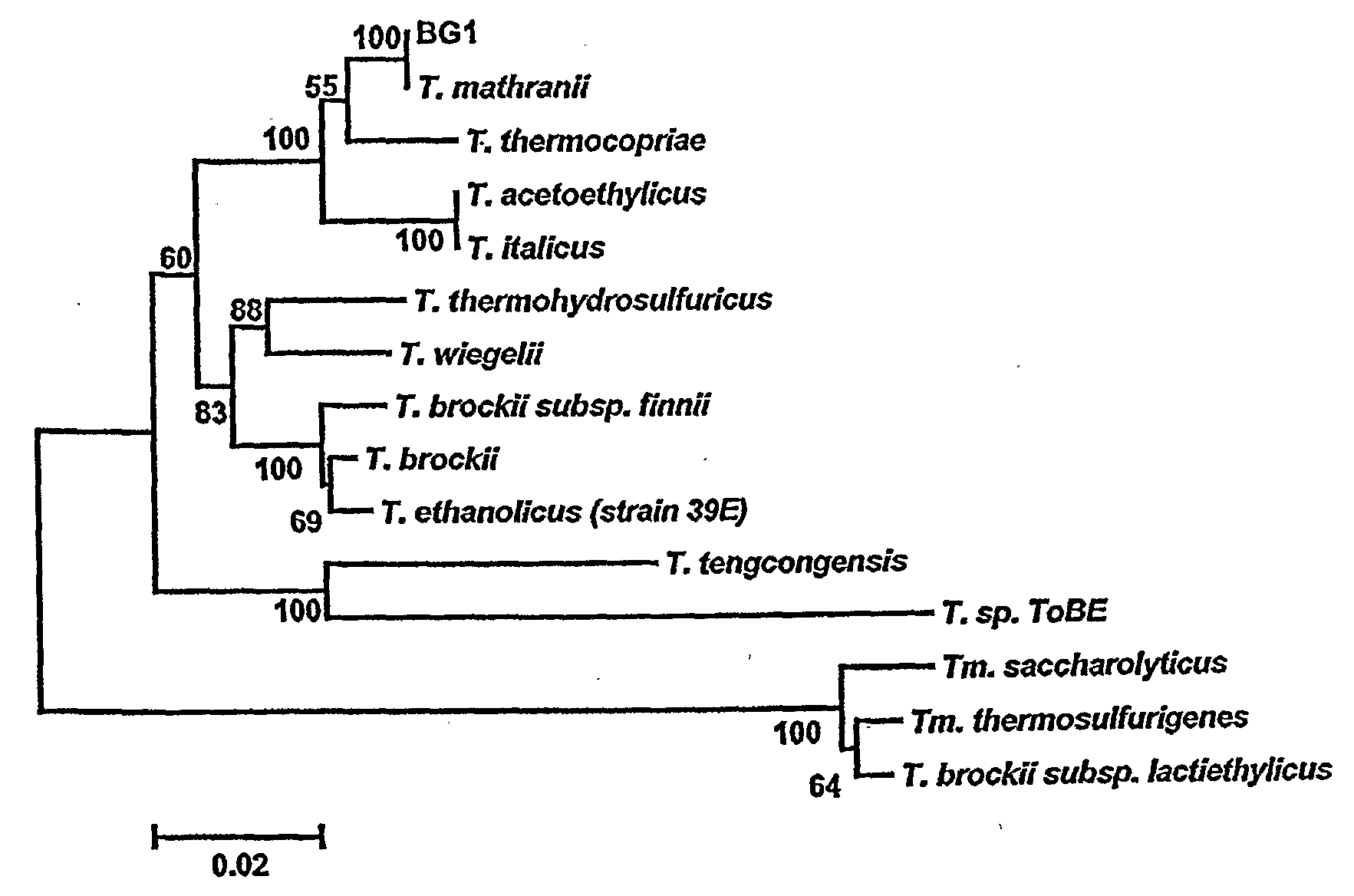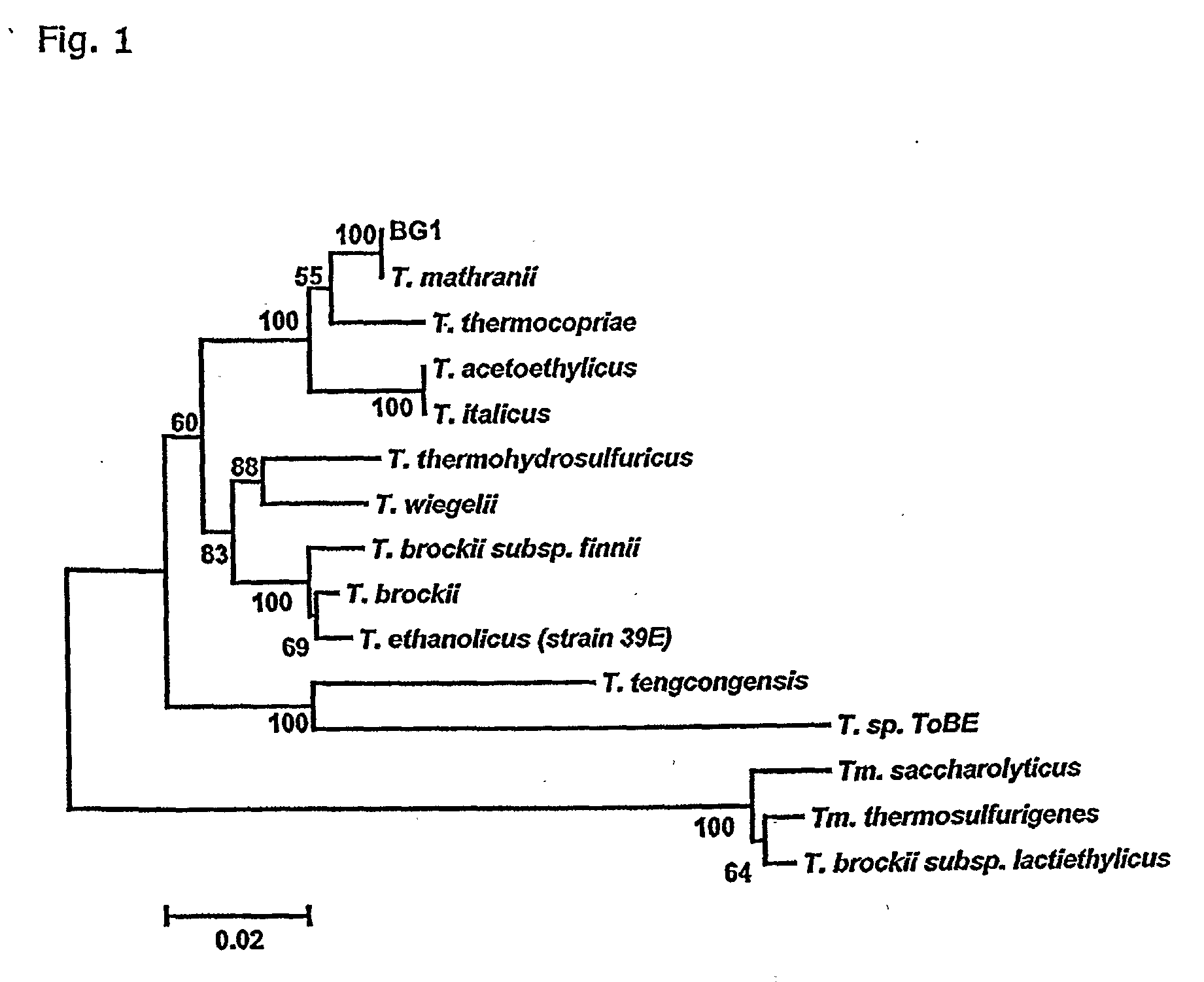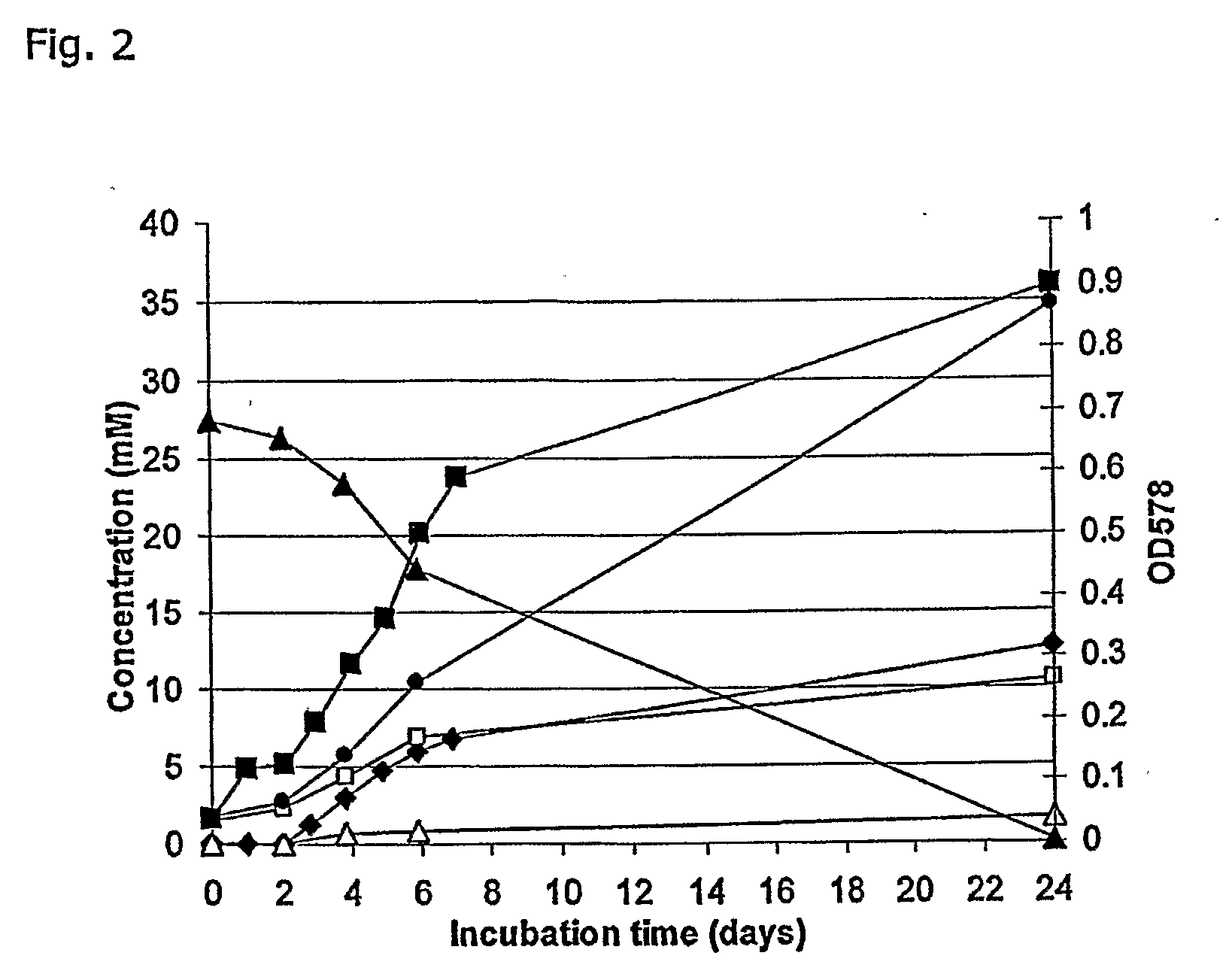Thermoanaerobacter mathranii strain bg1
- Summary
- Abstract
- Description
- Claims
- Application Information
AI Technical Summary
Benefits of technology
Problems solved by technology
Method used
Image
Examples
example 1
16S Analysis of BG1
[0088]A library of 1500 by 16S rDNA fragments from strain BG1 was constructed and analysed by restriction fragment length polymorphism analysis for different sequences. Only one digestion pattern was found and 6 clones were sequenced. The six sequences were identical and DNA homology search at www.ncbi.nlm.nih.gov placed strain BG1 in the group of Thermoanaerobacter mathranii, which now consist of strains A3 and BG1. The 16S rDNA sequence of BG1 is shown in the sequence list as SEQ ID NO:14. Except for seven unsequenced positions in the GenBank (Benson et al., 2005) sequence of strain A3, the two strains have identical 16S rDNA sequences. As FIG. 1 shows, the closest other relatives are Thermoanaerobacter thermocopriae (98% identity), Thermoanaerobacter acetoethylicus (95%) and Thermoanaerobacter italicus (95%). BG1 is closely related to Thermoanaerobacter mathranii strain A3 (Larsen et al., 1997). This places BG1 in cluster V of the Clostridia as previously descr...
example 2
Fermentation Products of BG1
[0089]BG1 was grown anaerobically in batch for 24 hours with 27 mM xylose as the sole carbon source (FIG. 2). In the first four hours of fermentation, almost equal amounts of acetate and ethanol were produced. Between 4 and 6 hours of growth, ethanol production increased relative to acetate, and in the late exponential phase or in stationary phase, almost exclusively ethanol was produced. Only a minor amount of lactate was produced throughout the experiment. Hydrogen production seemed to follow the production of acetate with approximately equimolar amounts of the two compounds produced.
example 3
Temperature, pH and Ethanol Tolerance of BG1
[0090]As can be seen from FIG. 3, the temperature optimum of strain BG1 is around 70° C., which is the same as the temperature of the hot spring from which BG1 was isolated. BG1 was found to grow in the pH range from pH=5.0 to 7.5. The product formation at different pH values of the culture medium was tested in batch experiments. As FIG. 4 shows, ethanol production was favoured in the pH range from 6.5 to 7.5, whereas lactate production was predominant at a lower pH. The optimal yield of ethanol was 1.15 mM ethanol / mM xylose at pH=6.5 and pH=7.5. At pH 5.5 the ethanol yield was 0.44 mM / mM. This corresponds to 69% and 26% of the theoretical maximum yield respectively.
[0091]Ethanol tolerance is of major importance for ethanol production. The product formation was investigated at elevated exogenous ethanol concentrations. As shown in FIG. 5, ethanol yields dropped dramatically at increased ethanol concentrations. At 0% initial ethanol in the ...
PUM
| Property | Measurement | Unit |
|---|---|---|
| Temperature | aaaaa | aaaaa |
| Temperature | aaaaa | aaaaa |
| Temperature | aaaaa | aaaaa |
Abstract
Description
Claims
Application Information
 Login to View More
Login to View More - R&D
- Intellectual Property
- Life Sciences
- Materials
- Tech Scout
- Unparalleled Data Quality
- Higher Quality Content
- 60% Fewer Hallucinations
Browse by: Latest US Patents, China's latest patents, Technical Efficacy Thesaurus, Application Domain, Technology Topic, Popular Technical Reports.
© 2025 PatSnap. All rights reserved.Legal|Privacy policy|Modern Slavery Act Transparency Statement|Sitemap|About US| Contact US: help@patsnap.com



